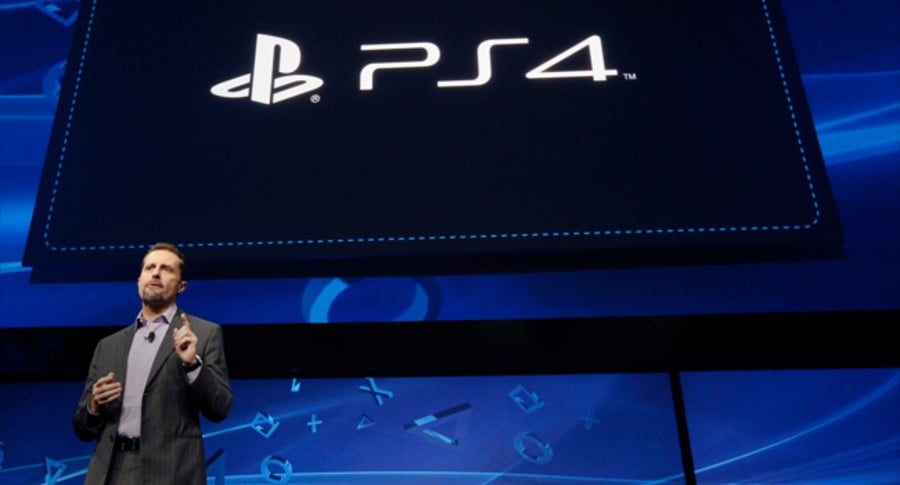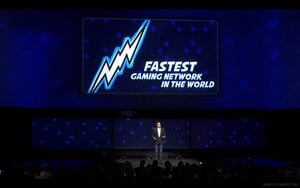
Sony has changed. The ungainly arrogance of the Ken Kutaragi era was quashed within minutes of the humbled hardware manufacturer’s practical pageantry overnight, as recently appointed SCE president Andrew House and system architect Mark Cerny relayed the advantages of a developer-driven future. The irresponsible overconfidence that spawned popular sound bites concerning second jobs seven years ago was quietly swept to the side, as the platform holder introduced a console that seems dedicated to reversing the wrongs of the past half-decade.

In many ways, the PlayStation 4 is the anti-PlayStation 3. Where its predecessor was clumsy and obtuse, the manufacturer’s next system is anything but. The architecture is familiar and straightforward, ensuring that developers will be able to almost instantly harness its prowess. Meanwhile, the hardware is consumer-friendly, offering a window into a socially connected world that promises interactivity and interest at every turn, rather than dead ends and lazily implemented community hooks.
Despite its posh PC innards, the platform promises to recapture the essence of what consoles are supposed to be all about. A lower power state will allow you to pause and restart gameplay instantaneously with the tap of a button. You’ll be able to play digital games almost immediately while they quietly download in the background, minimising the delay between activity and play. Firmware updates and patches will be unceremoniously dealt with behind the scenes, while the system will try to understand your likes and dislikes, and adapt its presentation to match your personal tastes.

Sony rattled through these announcements with a knowing nonchalance. Gaikai will allow you to play demos on-demand from the PlayStation Store, allowing you to get to grips with every game before you part with any cash. Remote Play, as it was always intended, will provide the option to bounce PS4 titles to your PlayStation Vita, freeing up your television to other members of the house. And, one day, PlayStation Cloud will allow you to access three generation’s worth of content on any connected device. The manufacturer appeared to slip into fantasy land at times – allowing your friends to pick up your progress across the Internet seems a bridge too far – but it never deviated from its primary vision of improving the experience for the consumer at the foot of the device.
And neither did it stray too far from the hallmarks that have always made PlayStation such an exciting brand. The architecture may be simplified, but the confirmation of 8GB GDDR5 RAM took even the development community by surprise. It’s since emerged that those working on PS4 projects only learned about the increase during last night’s press conference – yes, that Killzone: Shadow Fall demo was probably running on an earlier hardware prototype with 4GB GDDR5 RAM. We can only imagine what visual upgrades the inevitable E3 build will offer.

But we suppose that’s the sticking point for some: the games. It’s true, much of what was shown for PS4 looked like spruced up versions of titles that have come before. Guerrilla Games’ aforementioned debut looked simply stunning, but it still ultimately hinges on the same L1 to R1 action that we’ve played hundreds of times before. DriveClub seemed ambitious at first, but for all its promise of innovation, it’s essentially Need for Speed: Shift with a club-based angle and the obsessive attention to detail of a Kazunori Yamauchi release. Even the crudely stylised Watch_Dogs, a technical masterpiece, appears little more than a third-person shooter with a loosely implemented hacking hook. Been there, done that, and got the Platinum Trophy – but this is just the launch window line-up.
And you’d be naive for assuming that it’s all that the PS4 will have to offer. Last night was just a taste; an aperitif ahead of the main course at E3, GamesCom, and the Tokyo Game Show. Guerrilla Games, Sucker Punch, and Evolution Studios may be accounted for – but what of Polyphony Digital, Sony Santa Monica, and Naughty Dog? And just what was that Media Molecule sculpting presentation all about, anyway?
The key thing is that the system philosophy appears to be in the right place. It may lack the unbridled ambition of the CELL processor, but that’s probably for the best. PS4 is a console that seems to be rediscovering the importance of plug and play. And for everyone involved – be it the developers who will produce content for it or the consumers who will lose hours with its games – that seems like a step in the right direction.
What are your thoughts on the PS4’s consumer and developer-friendly philosophy? Do you think that the console is following the right path? Let us know your thoughts in the comments section below.





Comments 22
great news overall...i will be buying it day 1 no matter the costs...need to know some games from japanese company though...
Was a great event for Sony to show what's its bringing to the table. Getting guys like Mark Cernay on the forefront shows the narrative Sony will have for the next couple of years.
I am already saving up money! I am going to spend $800 because i want all those games!
It looks like I will need double investment, PS3 + PS4. Hopefully the former will receive a final price cut announced during the next E3. It's a pity for all those games to be blocked forever in the PS3 for the time being. And so I hope Sony will give me some incentives to go get one while it's still hot.
Or it could happen, wet dreams maybe, that Gaikai will be fully operative with already a good amount of PS3 high ranked games already available straight from PS4 launch.
Nice piece. You left out Bungie and Blizzard and whoever is doing Knack. There were a lot of games shown last night, and concepts from Mm and Quantic and Capcom. 1 thing Sony doesn't seem to have to worry about is games. In fact I'ld say the only thing they have to worry about it - and no it's not the price - is if they do decide to offset the price w/ subscription plans. Other than that I think they're golden.
And I don't buy the whole - Vita failed so PS4 will too - economic argument. The Vita failed b/c Sony focuses on home consoles. The Wii U is selling poorly b/c Nintendo focuses on their handhelds. It's just how the companies operate.
I'm not gonna buy this.
I'm not Impressed.
All these Rumors are telling me not to buy this piece of junk.
@machamp_king I'm curious, what rumors are you talking about. I can understand not being interested in the PS4 at this point, but you should give it some time to announce more, same with the next Xbox.
I will possibly wait, i have a PS3 still and im still playing a lot of games for it. i doubt ill be getting th PS4 day one, but i can sure as hell be sure i will buy it !
Promises need a fact to follow. Even now days ps3 is not as the one promised fully at the start
I'll wait until it catch up, vita is day one but ps4 as home console will not have my day one money
@Machamp_King You mean all the rumors that point to the PS4 being a huge success?
Gaikai is the key.
If the streaming technology works as promised, then that is what opens the door for PS4 to be truly next gen with all of the social gaming, sharing, interactivity with other devices (Apple/Android etc). That is what will make it greater than just a PS3 with better graphics.
Time will tell, but I am excited!
I liked it. It really seemd that Sony was incredibly focused with the PS4, and there was an air of no-nonsense about it.
People who have been complaining about the event reaffirm my views of the internet being a petty, petty place. Seriously? You're actually complaining about the absence of the console itself?
Christ.
Sony, Nintendo, and Microsoft are all in the same boat. No matter what they do, people will complain and moan about it. I predicted that the whiney vitriol directed toward the Wii U would evntually be directed at Sony (and eventually Microsoft), and I was right. People just want to complain and be negative - simply because they can.
Well, I'm NOT one of those people. Sony did a great job, and I'm really excited about the future - just like Nintendo and the Wii U.
Wait to see the bloated price before I make any decisions about where I am spending my money. At this point I am not convinced that a next gen will get enough momentum so sell the units they will want to shift and after PSVita's lack of support for the last 6 months or so I kinda wonder what sony will do if PS4 fails to takeoff immediately. I dont really fancy spending £400 plus, then finding that I can buy maybe 1 decent game every 12 months.
@Flashman There's been loads of Vita games over the last six months.
@get2sammyb Really coz I have been watching amazon and checking out reviews and all I see is crap getting released! With nothing but Killzone on the horizon worth maybe looking at!
Oh no I was wrong there was the fantastic Wake Up Club!! That was sarcasm btw!!
The vita so far has been a complete waste of money!
@Flashman Persona 4 Golden is out today if you're in Europe.
@get2sammyb Yes I just discovered that and I am sure they have timed it to prove me wrong about just crap being released!!
Cant wait for the ps4 to be released! I have all the other Sony consoles and this will help me complete the puzzle...and HAVE YOU SEEN WATCH DOGS!. I mean its propbably just me but i love the whole technological side of this. Then add the fact its like GTA? GTA + Future tech side= AMAZINGNESS! (in my opinion)
What a headline!!
@BekBlayton
yes , there's some nice alliteration going on there.
I like graphics, so 8 giggzaram is amazing. and I've been waiting for PS9 ever since those weird ads were running. Only 5 more gens, now; 10 years away? 15?
Tap here to load 22 comments
Leave A Comment
Hold on there, you need to login to post a comment...